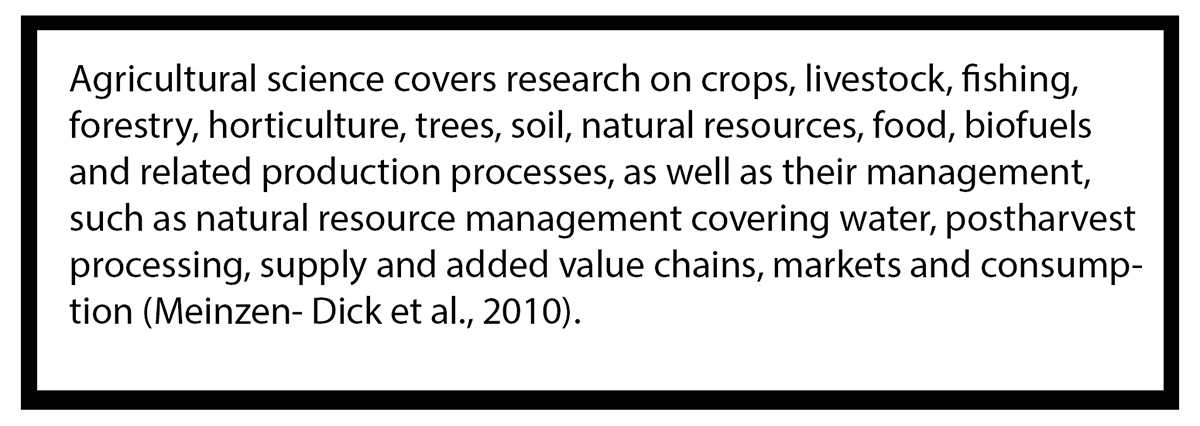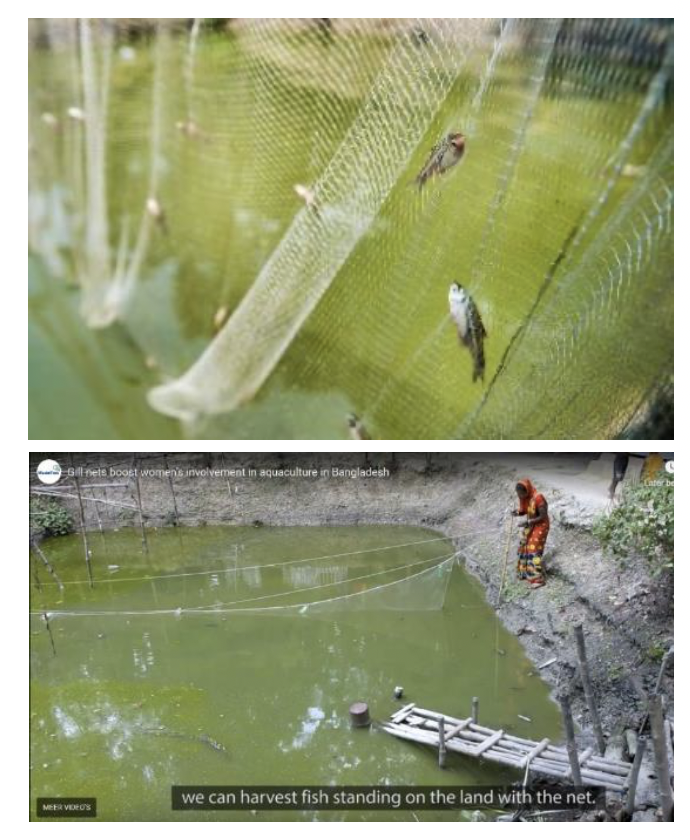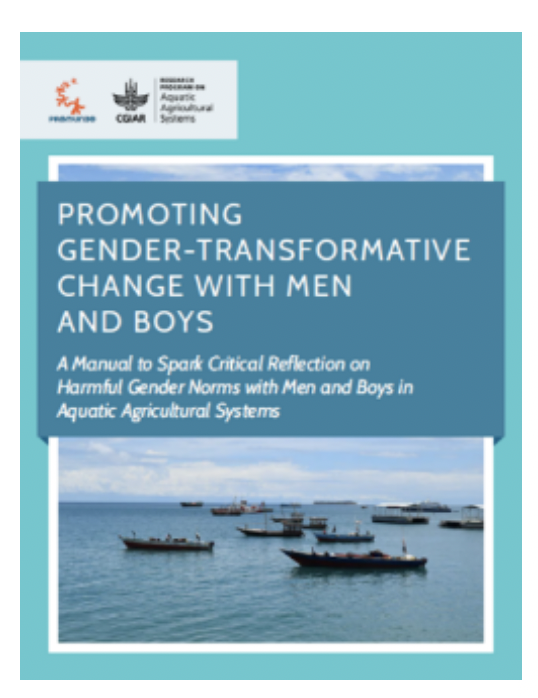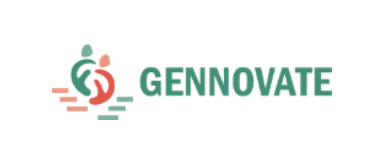Sex & Gender Analysis
Case Studies
- Science
- Health & Medicine
- Chronic Pain
- Colorectal Cancer
- Covid-19
- De-Gendering the Knee
- Dietary Assessment Method
- Gendered-Related Variables
- Heart Disease in Diverse Populations
- Medical Technology
- Nanomedicine
- Nanotechnology-Based Screening for HPV
- Nutrigenomics
- Osteoporosis Research in Men
- Prescription Drugs
- Systems Biology
- Engineering
- Assistive Technologies for the Elderly
- Domestic Robots
- Extended Virtual Reality
- Facial Recognition
- Gendering Social Robots
- Haptic Technology
- HIV Microbicides
- Inclusive Crash Test Dummies
- Human Thorax Model
- Machine Learning
- Machine Translation
- Making Machines Talk
- Video Games
- Virtual Assistants and Chatbots
- Environment
Agriculture: Embedding Gender Norms in Innovation Processes
The Challenge
Agricultural innovations tend to impact women and men differently. Most innovations focus on resolving technical problems, such as raising yields, withstanding environmental stress and managing poor soil or seeds. Such innovations often fail to account for: 1) how gender norms influence the implementation of technical solutions; or 2) how the implementation of technical solutions will influence gender norms. Consequently, innovations may not reach women and may even amplify gender inequality (Rola-Rubzen et al., 2020; Quisumbing et al., 2014, Lawless et al., 2017, Bock & van der Burg, 2017).
Method: Analyzing Gender
Gender experts across the CGIAR Consortium of International Agricultural Research Centers created GENNOVATE, aimed at developing gender-transformative approaches that embed gender norms in innovation processes. These include:
1. fostering critical examination of gender roles, norms and relations;
2. recognizing and strengthening positive norms that support equality;
3. promoting the position of women, girls and marginalized groups;
4. transforming underlying social structures, policies and broadly held beliefs that perpetuate gender inequality (Petesch et al., 2017, 2018, 2018a, 2018b; Badstue et al. 2018; Danielsen et al., 2018, with reference to IGWG 1997; see also Hillenbrand et al., 2015; Aregu et al., 2019; van der Burg, 2019; Fischer et al., 2019).
Gendered Innovations:
1. Gill Nets in Bangladesh. Gender-related cultural and religious expectations prohibit women in rural Bangladesh from harvesting fish even from their own ponds. Such tasks are seen as the responsibility of men. Women are also reluctant to enter ponds because they get their sarees wet. To support gender equality and to ensure food security, WorldFish, a part of CGIAR, introduced gill nets in the poorest parts of Bangladesh. The nets, which women can make themselves, are used to catch the nutrient-rich mola fish. Crucial to the success of this project were initiatives addressing gender consciousness to ensure that husbands, in-laws and neighbors supported the new role of women in cultivating and catching fish with gill nets.
2. Embedding Gender Norms in Innovation Processes. CGIAR gender experts have proposed in-depth research methods to include gender norms in large-scale agricultural R&D programs. In a four-year project (2014-2018) sponsored by the Bill and Melinda Gates Foundation, they collaborated in GENNOVATE to develop extensive methodologies, reports, articles, briefs, and videos as resources for research teams to understand how gender norms and innovation processes in the management of agriculture and natural resources influence each other across diverse rural settings.
Gendered Innovation 1: Gill Nets in Bangladesh
Method: Co-Creation and Participatory Research
Method: Analyzing Gender
Gendered Innovation 2: Embedding Gender Norms in Innovation Processes
Conclusions
Next Steps
The Challenge
Agricultural innovations tend to impact women and men differently. Most innovations focus on resolving technical problems, such as raising yields, withstanding environmental stress and managing poor soil or seeds. Such innovations often fail to account for: 1) how gender norms influence the implementation of technical solutions; or 2) how the implementation of technical solutions will influence gender norms. Consequently, innovations may not reach women and may even amplify gender inequality (Rola-Rubzen et al., 2020; Quisumbing et al., 2014, Lawless et al., 2017, Bock & van der Burg, 2017).
Research shows that gender and other normative social structures often lead to unequal benefits from innovation opportunities. Restrictive gender norms are deeply engrained in institutions such as the family, education, banking and so on. These constrain the agency of women, their access to resources and services, mobility, representation and decision-making capacity, especially for less privileged groups (Cole et al., 2015; Badstue et al., 2018). This is the case worldwide (Bock & Shortall, 2017).
Gender-transformative approaches have been developed to address these issues by:
1. fostering the critical examination of gender roles, norms and relations;
2. recognizing and strengthening positive norms that support equality;
3. promoting the position of women, girls and marginalized groups;
4. transforming underlying social structures, policies and broadly held beliefs that perpetuate gender inequality (Petesch et al., 2017, 2018, 2018a, 2018b; Badstue et al. 2018; Danielsen et al., 2018, with reference to IGWG 1997; see also Hillenbrand et al., 2015; Aregu et al., 2019; van der Burg, 2019; Fischer et al., 2019).
Gendered Innovation 1: Gill Nets in Bangladesh
To overcome food poverty, WorldFish led the USAID-funded project Aquaculture for Income and Nutrition, with local partners in Bangladesh. WorldFish is one of the institutes of the worldwide Consultative Group of International Agricultural Research Institutes (CGIAR). The project combined the introduction of new technology with a gender-transformative approach (Kruijssen et al., 2016; see also WorldFish, “Gill nets enable women to harvest nutritious fish in Bangladesh” with video, downloaded 15 February 2020.)
 Fish is the most important animal-source food in Bangladesh. Approximately 60% of the population eats fish at least every other day, with daily per capita consumption at 44 grams for the poorest households. In 2012, around 4.27 million households (20% of rural households) had a fish pond (Belton & Azad, 2012).
Gender-related cultural and religious expectations prohibit women from harvesting fish even from their own ponds. Such tasks are seen as the responsibility of men. Women are also reluctant to enter ponds because they get their sarees wet, which then need to be laundered. As a consequence, women mostly feed the fish and help clean the ponds, while men harvest and market the fish, and make financial decisions for the household.
To support gender equality and to ensure food security, WorldFish started to introduce mola gill nets in the poorest parts of Bangladesh. Gill nets are fishing nets that are lightweight enough for women to cast from the bank of the pond—without getting into the water.
Gill nets come in meshes of different sizes—with mesh size determining the type of fish caught. A fish swims into the net but passes only part way through the mesh. When it struggles to free itself, the netting slips behind the gill cover to trap the fish. Since the nets are used to catch only nutrient-rich mola fish (Amblypharyngodon mola), there is little danger of netting larger fish, which men tend to control.
Women attended an eight-day training course on how to make and use a gill net. The nets were 7.5 meters wide by 1.8 meters high. Women were taught to make their own nets by buying low-cost mesh and rope from the market and using empty bottles (for floats) and rocks or broken bricks (as sinkers). Harvesting fish with these nets takes around 30 minutes from setting the net to pulling in the catch.
Fish is the most important animal-source food in Bangladesh. Approximately 60% of the population eats fish at least every other day, with daily per capita consumption at 44 grams for the poorest households. In 2012, around 4.27 million households (20% of rural households) had a fish pond (Belton & Azad, 2012).
Gender-related cultural and religious expectations prohibit women from harvesting fish even from their own ponds. Such tasks are seen as the responsibility of men. Women are also reluctant to enter ponds because they get their sarees wet, which then need to be laundered. As a consequence, women mostly feed the fish and help clean the ponds, while men harvest and market the fish, and make financial decisions for the household.
To support gender equality and to ensure food security, WorldFish started to introduce mola gill nets in the poorest parts of Bangladesh. Gill nets are fishing nets that are lightweight enough for women to cast from the bank of the pond—without getting into the water.
Gill nets come in meshes of different sizes—with mesh size determining the type of fish caught. A fish swims into the net but passes only part way through the mesh. When it struggles to free itself, the netting slips behind the gill cover to trap the fish. Since the nets are used to catch only nutrient-rich mola fish (Amblypharyngodon mola), there is little danger of netting larger fish, which men tend to control.
Women attended an eight-day training course on how to make and use a gill net. The nets were 7.5 meters wide by 1.8 meters high. Women were taught to make their own nets by buying low-cost mesh and rope from the market and using empty bottles (for floats) and rocks or broken bricks (as sinkers). Harvesting fish with these nets takes around 30 minutes from setting the net to pulling in the catch.
Method: Co-Creation and Participatory Research
Project researchers compared five nets with different mesh sizes to identify: 1) which nets performed best for catching small fish; and 2) which nets best met women’s needs and preferences. They found that gill nets with 1.7 cm mesh were women’s top choice.
Women were also taught to manage mola fish farming and were provided with nutrition education on mola. Mola is a small fish rich in vitamin A, iron and zinc. When eaten whole, including the head, organs and bones, mola is rich in micronutrients—important for good health and child development. The mola gill net allows frequent harvesting and consumption of mola. Just 17 mg of mola can provide the recommended vitamin A intake for a child under the age of 5 (Kataki & Babu, 2002).
Method: Analyzing Gender
Crucial to the success of this project was recognizing and transforming gender norms. Because fishing has traditionally been men’s work, initiatives addressing gender consciousness to ensure that husbands, in-laws and neighbors supported the new role of women in cultivating and catching fish with gill nets. These addressed gender dynamics ranging from intra-household power hierarchies to food distribution. They also addressed gender norms that limited individual and family wellbeing and enhanced ways to collaboratively shift gender relations. Women were also coached in self-confidence, negotiating skills and assertiveness. Results showed changed attitudes among men and women, enhanced collaboration between family members and greater acceptance of technology uptake by women (Kruijssen et al., 2016; IFPRI Gender Breakfast, 2017; personal information from A. Choudhury). WorldFish also monitored changes in production, attitudes and practices (both technical and social) through surveys and interviews with women, their partners and other household members (Kruijssen et al., 2016).
Gendered Innovation 2: Embedding Gender Norms in Innovation Processes
Through GENNOVATE, gender experts from CGIAR institutes, including WorldFish, collaborated to integrate social processes and especially gender norms into large-scale agricultural R&D programs. They developed extensive methodologies, reports, articles, briefs and videos for research teams in this four-year research project (2014-2018), sponsored by the Bill and Melinda Gates Foundation. GENNOVATE advanced in-depth research methods to understand how gender norms and innovation processes in agriculture and natural resource management influence each other, across diverse rural settings.
Its core research addressed the following questions (Petesch et al., 2017):
1. How do gender norms advance or impede the adoption of innovative technologies in agriculture and natural resource management across different contexts and social structures?
2. How and where do new agricultural technologies or practices advance or weaken women’s agency and change gender norms to the benefit or harm of women?
3. When and under which circumstances do changes in gender norms and women’s and men’s agency catalyze innovation and promote inclusive outcomes? What contextual factors influence this relationship?GENNOVATE exemplifies standardized methodologies and tools for research that include gender norms. Its conclusions are based on the participation of over 7,000 men and women from 137 rural communities in 26 countries in discussion groups and interviews (split by sex, age and socioeconomic status—see Badstue et al., 2018; Petesch et al., 2018).
GENNOVATE’s methodologies for examining gender norms can be applied in any gender-sensitive baseline study or preferably in an ex ante Gender Impact Assessment (GIA) as part of a large-scale agricultural R&D program.

This manual, developed by Promundo and CGIAR-WorldFish, contains 13 activity-based group sessions to engage men and boys in gender-transformative dialogue as developed for aquatic agricultural systems. The sessions focus on:
1. understanding how power and gender inequality perpetuates poverty and harms wellbeing;
2. taking action to create more inclusive environments for women in aquatic agricultural development;
3. promoting shared financial and household decision-making;
4. increasing negotiation and communication skills; promoting men’s involvement in care work; and
5. understanding how to stop cycles of violence (Promundo-US and the CGIAR Research Program on Aquatic Agricultural Systems, 2016).
Conclusions
Early evidence suggests that gender equality is enhanced when the introduction of a technological innovation is accompanied by a gender-transformative approach that promotes the inclusion of gender norms. Kruijssen et al. (2016) state that projects are able to trigger transformation in norms and traditions when focusing on the root causes limiting women’s participation.
An integrated systems approach that starts from the interaction of technological and social dimensions may produce favorable outcomes, as demonstrated in the example of gill net fishing in Bangladesh. It demonstrates how an agri-food or farm systems approach that integrates different actors and activities (diverse crop, livestock and natural resource management) is best equipped to include the gender dimension (Fisher et al., 2019); Feldstein, 2000; van der Burg, 2019). GENNOVATE provides the research evidence and methodological tools to address the ways in which gender norms influence and are influenced by innovations in agricultural and resource management.
Next Steps
The good practices presented in this case study can be broadly applied in agricultural R&D. They can be further supported and expanded by:
1. The inclusion of gender and other social norms in new designs of agricultural R&D projects, especially in baseline studies or ex ante GIAs. GENNOVATE researchers have already provided examples (e.g. Farnworth et al., 2017, 2018, 2018a; Kawarazuka et al., 2018; Rietveld & Farnworth 2018, 2018a; Bergman Lodin et al., 2019; Lawless et al., 2019).
2. European research on agricultural innovation will benefit from addressing the influence of gender and other social norms on access to and benefits from resources such as land ownership, training, credit, mobility, decision-making power and support from family and community members (Bock and Shortall, 2017; EIGE, 2016).
3. Research in this area calls for an intersectional perspective to address heterogeneity in women and men related to other social dimensions or identities, such as socioeconomic status, geographic location, family structures, religion, etc. (e.g. see Elias et al., 2018; Rietveld et al., 2020).Policy:
1) Commission comparative research into the design and implementation of innovations that contribute to social and gender equality in agriculture, forestry, fisheries and nature management in various rural settings across the world.
2) Support coordinated awareness-raising about the influence of gender and other social norms in international agriculture-related organizations and platforms such as European Innovation Partnerships (EIPs), and provide them with instruction manuals on how to sustainably reduce inequality and achieve higher equality through innovations.
3) Request context-specific ex ante GIA research as part of research and policy-making.
Works Cited
Aregu, L., A. Choudhury, S. Rajaratnam, M. van der Burg and C. McDougall (2020). Implications of agricultural innovation on gender norms: Gender approaches in aquatic agriculture in Bangladesh. In Sachs, C. (Ed.). Gender, Agriculture and Agrarian Transformations: Changing Relations in Africa, Latin America and Asia. Milton Park, Abingdon, Oxfordshire: Routledge, 162-179.
Badstue, L., Petesch, P., Feldman, S., Prain, G., Elias, M., & Kantor, P. (2018). Qualitative, Comparative and Collaborative Research at Large Scale: An Introduction to GENNOVATE. Journal of Gender, Agriculture and Food Security, 3 (1), 1-27.
Belton, B., and Azad, A. (2012). The characteristics and status of pond aquaculture in Bangladesh, Aquaculture, 358, pp. 196–204.
Bergman Lodin, J., Tegbaru, A., Bullock, R., Degrande, A., Wopong Nkengla, L. & Ibrahim Gaya, H. (2019). Gendered mobilities and immobilities: Women’s and men’s capacities for agricultural innovation in Kenya and Nigeria. Gender, Place & Culture 26 (12), pp. 1759-1783.
Bock, B., & van der Burg, M. (2017). Gender and international development. In: Bock, B. & Shortall, S. (Eds.) Gender and rural globalization. Wallingford and Cambridge, MA: CABI, 245-252.
Bock, B., & van der Burg, M. (2017). Gender and rural globalization. Wallingford and Cambridge, MA: CABI.
Burg, M. van der. (2020). ‘Change in the Making’: 1970s and 1980s building stones to Gender Integration in CGIAR Agricultural Research. In Sachs, C. (Ed.). Gender, Agriculture and Agrarian Transformations: Changing Relations in Africa, Latin America and Asia. Milton Park, Abingdon, Oxfordshire: Routledge, 35-57.
Cole, S.M., Puskur, R.,Rajaratnam, S. & F. Zulu, F. (2015). Exploring the intricate relationship between poverty, gender inequality, and rural masculinity: A case study from an aquatic agricultural system in Zambia. Culture, Society and Masculinities, 7 (2), 154-170.
Danielsen, K., F. Wong, and M. Mukhopadhyay (2019). Integrating “gender” in research for development: How you interpret the term can shape project achievements. CIMMYT gender resources for agricultural research and development professionals. CDMX, Mexico: CIMMYT.
Elias, M., N. Mudege, Lopez, D.E., Najjar, D., Kandiwa, V., Luis, J. Yila, J., Tegbaru, A., Ibrahim, G. & Bentaibi, A. (2018). Gendered aspirations and occupational trajectories among the rural youth: a cross-regional perspective. Journal of Gender, Agriculture and Food Security, 3 (1), 82-107.
European Institute for Gender Equality-EIGE (2016). Gender in Agriculture and Rural Development, Luxembourg: Publications Office of the European Union.
Farnworth, C.R., Jafry, T., Lama, K., Chatterjee, S. & Badstue, L. (2017). Challenging gender myths: Promoting inclusive wheat and maize research for development in Nepal. GENNOVATE resources for scientists and research teams. CDMX, Mexico: CIMMYT.
Farnworth, C. R., Bharati, P., Jafry, T., & Badstue, L. (2018). Strengthening women in wheat farming in India: Old challenges, new realities, new opportunities. GENNOVATE resources for scientists and research teams. CDMX, Mexico: CIMMYT.
Farnworth, C.R., Jafry, T., Rahman, S. & Badstue, L. (2018a). Leaving no one behind: Supporting women, poor people, and indigenous people in wheat-maize innovations in Bangladesh. GENNOVATE resources for scientists and research teams. CDMX, Mexico: CIMMYT.
Feldstein, H.S. (2000). Gender analysis: Making women visible and improving social analysis. In: Collinson, M. (Ed.), A history of farm systems research. Wallingford, K:CABI and Rome, Italy: FAO, 67-76.
Fischer, G., Wittich, S. & Fründt, S. (2019). Gender analysis in farming systems and action research: A training manual. Ibadan, Nigeria: IITA.
Hillenbrand, E., Karim, N., Mohanraj, P. & Wu, D. (2015). Measuring gender transformative change: A review of literature and promising practices. CARE USA. Working Paper.
IFPRI Gender Breakfast with CARE and WorldFish. (2017). Slides of webinar Measuring Gender-Transformative Change. In Agriculture: A review of the literature and promising practices, February 16, 2017, with presenters: Cole, S., McDougall, C. & Choudhury, A. (WorldFish); Hillenbrand, E. & Mohanraj, P. (CARE USA); discussant: R. Meinzen-Dick (IFPRI).
Kataki, P. & Babu, S.C. (2002). Food Systems for Improved Human Nutrition: Linking Agriculture, Nutrition, and Productivity. Journal of Crop Production, 6 (1/2) (#11/12).
Kawarazuka, N., Prain, G., Forsythe, L., Mayanja, S., Mudege, N.N., Babini, C. & V. Polar, V. (2018). Gender in Agricultural Mechanization: Key guiding questions. Lima, Peru: CIP.
Kruijssen, F., Audet-Belanger, G., Choudhury, A., Crissman, C., Dalsgaard, J. P. T., Dawson, C., Dickson, M., Genschick, S., Islam, M.M., Kaminski, A., Keus, H.J., McDougall, C. Banda, L.E., Muyaule, C. & Rajaratnam, S. (2016). Value chain transformation: Taking stock of WorldFish research on value chains and markets. Penang, Malaysia: CGIAR Research Program on Aquatic Agricultural Systems. Working Paper: AAS-2016-03.
Lawless, S., Doyle, K., Cohen, P., Eriksson, H., Schwarz, A. M., Teioli, H., Vavekaramui, A., Wickham, E., Masu, R., Panda, R & McDougall, C. (2017). Considering gender: Practical guidance for rural development initiatives in Solomon Islands. Penang, Malaysia: WorldFish. Program Brief.
Lawless, S., Cohen, P., McDougall, C., Orirana, G., Siota, F., & Doyle, K. (2019). Gender norms and relations: implications for agency in coastal livelihoods. Maritime Studies 18, 347–358.
Meinzen-Dick, R., Quisumbing, A., Behrman, J., Biermayr-Jenzano, P., Wilde, V., Noordeloos, M., Ragasa. C. & Beintema, N. (2010). Engendering agricultural research. International Food Policy Research Institute (IFPRI) Discussion paper 973.
Österblom, H., Wabnitz, C.C.C., Tladi, D. et al. (2020). Towards Ocean Equity. Washington, DC: World Resources Institute.
Petesch, P., Badstue, L., Prain, G., Elias, M., & Tegbaru, A. (2017). Entry points for enabling gender equality in agricultural and environmental innovation. GENNOVATE resources for scientists and research teams. CDMX, Mexico: CIMMYT.
Petesch, P., Badstue, L. & Prain, G. (2018). Gender norms, agency, and innovation in agriculture and natural resource management. The GENNOVATE methodology. Mexico, D. F.: CIMMYT.
Petesch, P., Badstue, L. B., Camfield, L., Feldman, S., Prain, G., & Kantor, P. (2018a). Qualitative, comparative and collaborative research at large scale: the GENNOVATE field Methodology. Journal of Gender, Agriculture and Food Security, 3 (1), 28-53.
Petesch, P., Bullock, R., Feldman, S., Badstue, L., Rietveld, A., Bauchspies, W., Kamanzi, A. Tegbaru, A. &Yila, J. (2018b). Normative dimensions of agency and agricultural decision-making in Sub-Saharan Africa. Journal of Gender, Agriculture and Food Security, 3 (1), 108-130.
Promundo-US and the CGIAR Research Program on Aquatic Agricultural Systems (2016). Promoting gender-transformative change with men and boys: A manual to spark critical reflection on harmful gender norms with men and boys in aquatic agricultural systems. Washington DC: Promundo-US and Penang: CGIAR.
Quisumbing, A., Meinzen-Dick, R., Raney, T.L., Croppenstedt, A. Behrman, J. A. & Peterman, A. (Eds.) (2014). Gender in agriculture. Closing the knowledge gap. Dordrecht: Springer.
Rietveld, A., & Farnworth, C.R. (2018). Towards gender-responsive banana research for development in the East-African Highlands. GENNOVATE resources for scientists and research teams. CDMX, Mexico: CIMMYT.
Rietveld, A., & Farnworth, C.R. (2018a). Continuity and change: Negotiating gender norms in agricultural research for development in Rwanda. GENNOVATE resources for scientists and research teams. CDMX, Mexico: CIMMYT
Rietveld, A. M., van der Burg, M., & Groot, J. C. (2020). Bridging youth and gender studies to analyse rural young women and men's livelihood pathways in Central Uganda. Journal of Rural Studies, 75, 152–163.
Rola‐Rubzen, M. F., Paris, T., Hawkins, J., & Sapkota, B. (2020). Improving Gender Participation in Agricultural Technology Adoption in Asia: From Rhetoric to Practical Action. Applied Economic Perspectives and Policy, 42 (1), 113-125.
Sachs, C.E., Jensen, L., Castellanos, P. & Sexsmith, K. (Eds.) (2021). Gender in Agriculture Handbook, Milton Park, Abingdon, Oxfordshire: Routledge.
Swim, J.K., Vescio, T. K., Dahl, J. L. & Zawadzki, S. J. (2018). Gendered discourse about climate change policies. Global Environmental Change, 48, 216-225.
Agricultural innovations tend to impact women and men differently. Most innovations focus on resolving technical problems, such as raising yields. Such innovations fail to consider: 1) how gender norms influence the implementation of technical solutions; or 2) how the implementation of technical solutions impact gender norms. Consequently, innovations may not reach women and may even amplify gender inequality. Gendered Innovation: Gill Nets in Bangladesh. Gender-related cultural and religious expectations prohibit women in rural Bangladesh from harvesting fish, even from their own ponds. To support gender equality and to ensure food security, WorldFish introduced gill nets in the poorest parts of Bangladesh. The nets, which women can make themselves, are used to catch the nutrient-rich mola fish. Crucial to the success of this project are initiatives addressing gender norms to ensure that husbands, in-laws, and neighbors support women’s cultivating and catching fish with gill nets.







